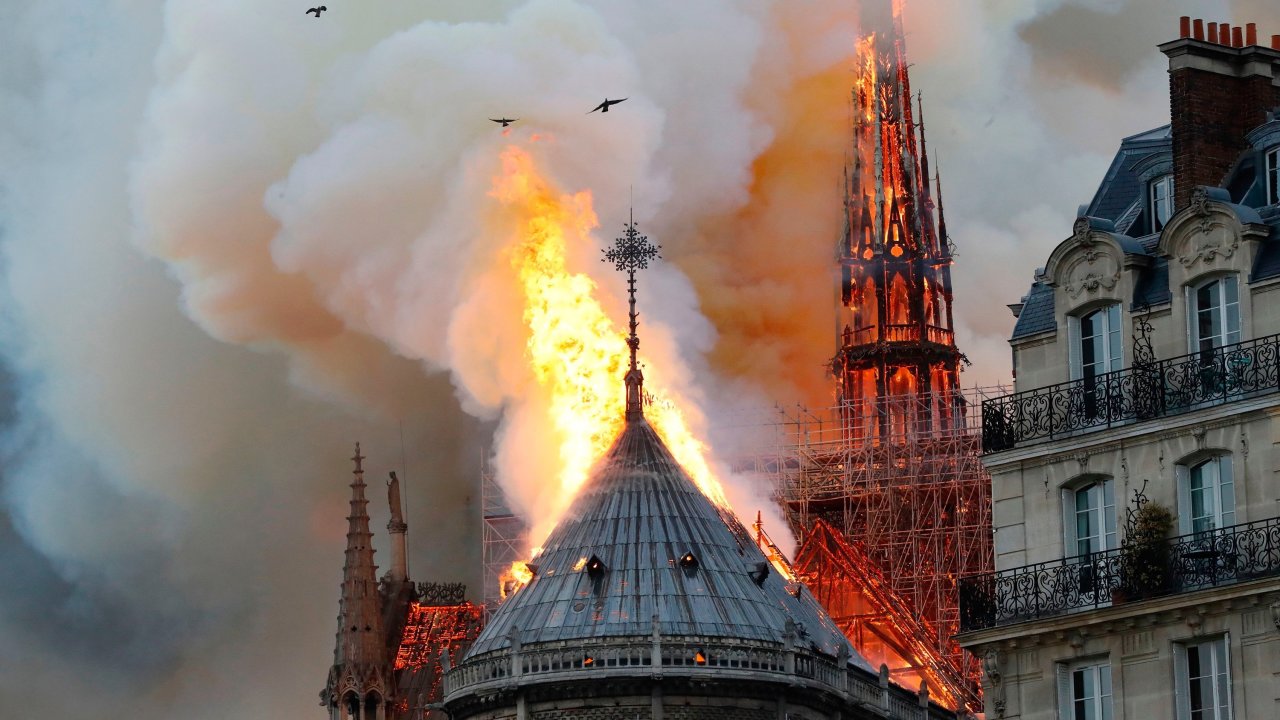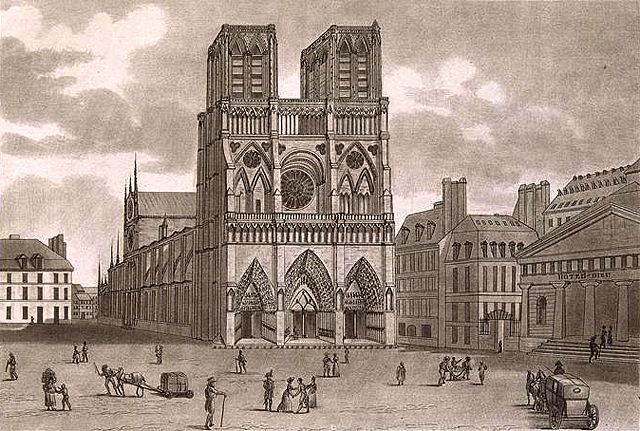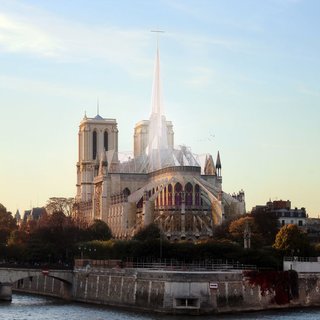Notre Dame de Paris: Past, Present, Future.
May 1, 2019

Introduction
When buildings witness the growing pains of a nation, and weather the assaults of time, they become emblematic of their surroundings. Structures that were once merely beautiful can take on a new power when hallowed by the ages; an undeniable power that seduces the whole world.
Notre Dame de Paris is one such building. The iconic cathedral is so synonymous with Paris, that when it caught flame on April 15th, 2019, even those of us on the other side of the Atlantic felt as if we were losing something. Something intangible and irreplaceable. Perhaps the soul of that one place we all dream of: Paris.
The mellow chants and whispered prayers that have filled the Cathedral since its inception rose into a screaming crescendo on that fateful Holy Monday; echoing all of our anguish at seeing priceless human history fall, helplessly, into ash.
Today we will explore the past, present, and future of that greatest of buildings: Notre Dame de Paris.
Past
 Paris, the ancient capital of Gaul, was home to a small Christian population starting in the 3rd century C.E. Roman persecution made the building of a Church impossible, and resulted in the martydom of Paris' patron Saint, and first Bishop, Saint Denis.
Paris, the ancient capital of Gaul, was home to a small Christian population starting in the 3rd century C.E. Roman persecution made the building of a Church impossible, and resulted in the martydom of Paris' patron Saint, and first Bishop, Saint Denis.
After Emperor Constantine's Edict of Milan in 313, which legalized Christianity in the Roman Empire, a new era of Church building began.
The first Church in Paris was the Basilica of St. Stephen. Very little is known about this building. Excavations have revealed its vast size and proximity to the current Notre Dame de Paris. It is dated roughly between the 4th and 7th centuries C.E.
By the 12th century, a new cathedral was needed, and innovations in Gothic architecture had opened unprecedented possibilities in terms of size and design.
Maurice de Sully was elected Bishop of Paris in 1160 and began spearheading the movement for a new Cathedral. The first stone of Notre Dame de Paris was laid in 1163.
The original cathedral was completed over the next 300 years. Masters of the arts dedicated their lives to the perfecting of Notre Dame de Paris resulting in what would become the most iconic gothic cathedral of all time.
Age, revolution, and neglect eroded the cathedral over time, and by the 19th Century the cathedral was is need of major renovations.
In 1802, the cathedral was returned to the Catholic Church, and in 1831 Victor Hugo published his hugely successful novel Notre Dame de Paris.
Momentum for renovation built throughout the century and by 1844, the Government of King Louis-Philippe I ordered the restoration of the cathedral and the building of a sacristy.
During this period the spire was added, the organ was overhauled, and sculptures which had been vandalized during the Revolution were repaired.
Over the course of the 20th century, Notre Dame de Paris would survive two World Wars and grow into its role of Parisian icon, and French symbol.
Present
 On April 15th, 2019. Notre Dame de Paris caught flame.
On April 15th, 2019. Notre Dame de Paris caught flame.
The fire raged for hours and the world watched helplessly as the iconic spire fell into ash.
French firefighters were able to prevent the fire from spreading from the roof to the towers, ultimately saving the cathedral. The relics and treasures of the cathedral, associated with the Passion of Christ, were saved as well. The original wooden ceiling, known as "the forest," was lost completely.
The cause of the fire is still being investigated.
Fundraising efforts for the restoration of the cathedral started immediately. President Emmanuel Macron vowed to have the cathedral renovated entirely within 5 years, and France's billionaire-class collectively pledged over $700 million dollars for the renovations.
While it was briefly thought that the national crisis might reunify the torn French political world, tensions over public spending soon reignited.
France's yellow-vest movement, bemoaned the exorbitant pledges towards renovations made by the French elite, and started fires throughout the city.
The fate of the cathedral, and the political events of France, remain to be seen.
Future
 Since the fire, much attention has been placed on the restoration of the cathedral. How does one go about restoring a priceless and one-of-a-kind national monument?
Since the fire, much attention has been placed on the restoration of the cathedral. How does one go about restoring a priceless and one-of-a-kind national monument?
President Macron has opened up a design competition to find the new Notre Dame de Paris. Submissions range from staunchly traditional to boldly experimental.
Italian architects Massimiliano and Doriana Fuksas proposed building a modern roof and spire made from Baccarat crystal to the cathedral, which would be illuminated at night.
Vizumatelier's, a studio housed in Bratisalava, proposal for the spire is a delicate tower capped with a beam of light that will shine directly into the sky.
"In gothic times builders tried to reach the sky. Viollet le Duc tried it also in the 19th century and came closer. Now it's possible to make it happen," said the studio.
São Paulo architecture firm AJ6 Studio envisions Notre-Dame being reconstructed with a roof and spire made largely from stained glass.
"In gothic there is the connection of the earth to the sky, and inside the cathedral, the natural illumination multiplies in colors through the filter of the cover in stained glass," explained Alexandre Fantozzi, creative partner at the studio.
Who knows what shape Notre Dame de Paris will take in the next decade?
Only one thing is certain: Notre Dame de Paris will remain an iconic symbol of French vision, endurance, and cultural vitality.
